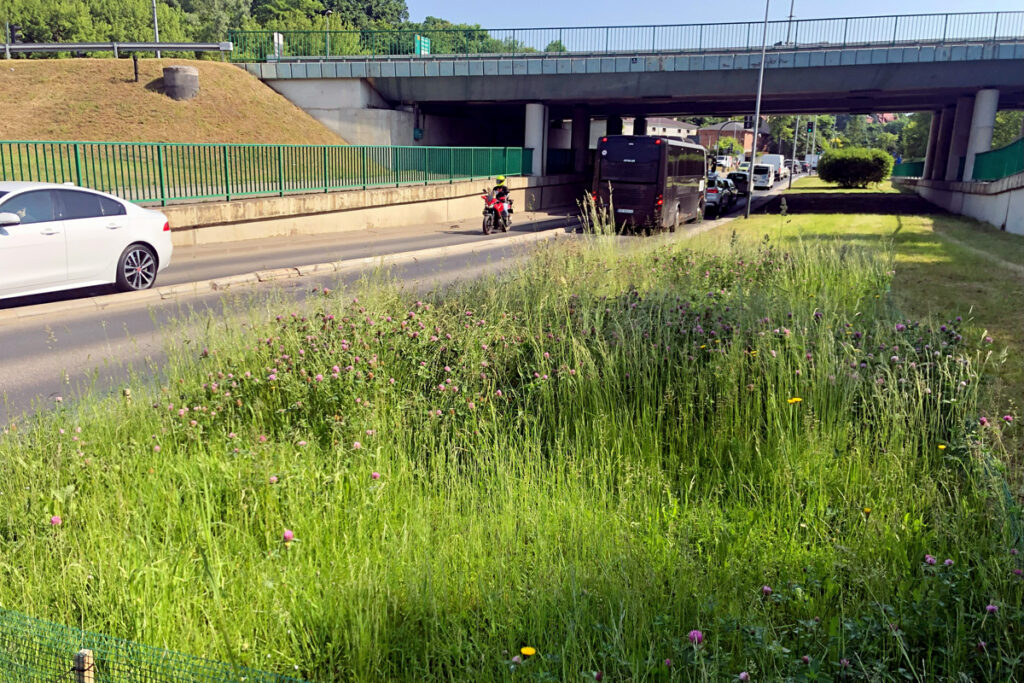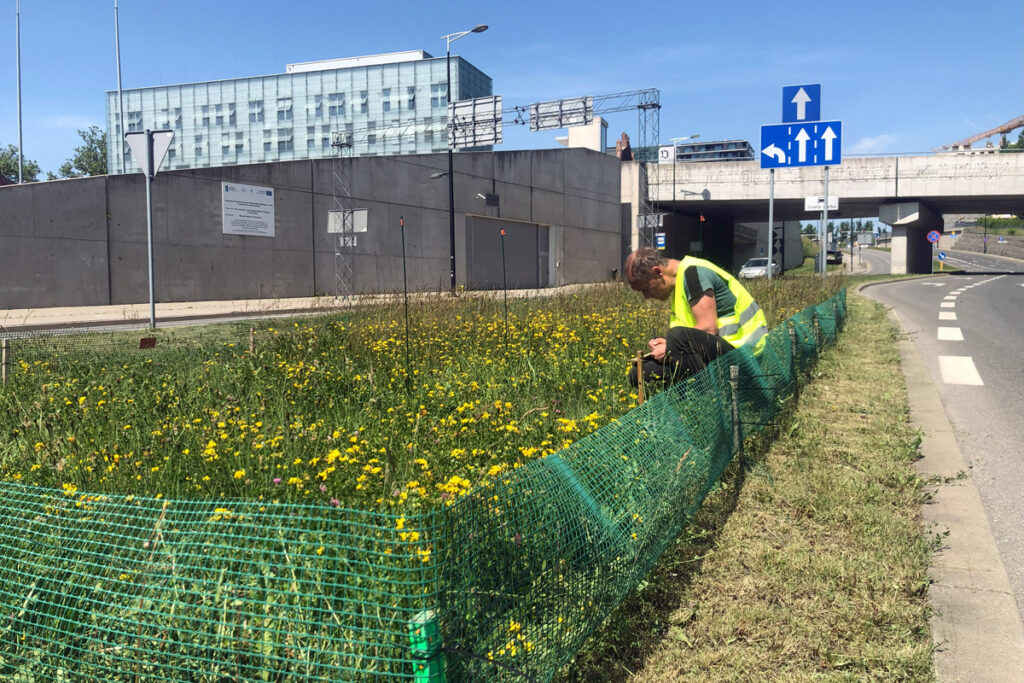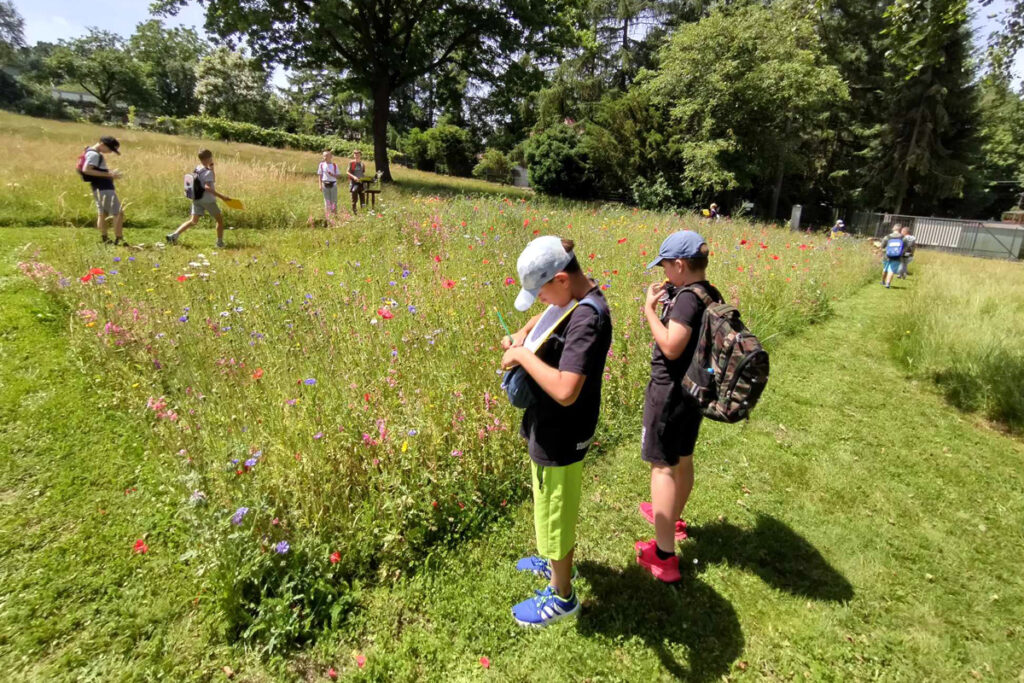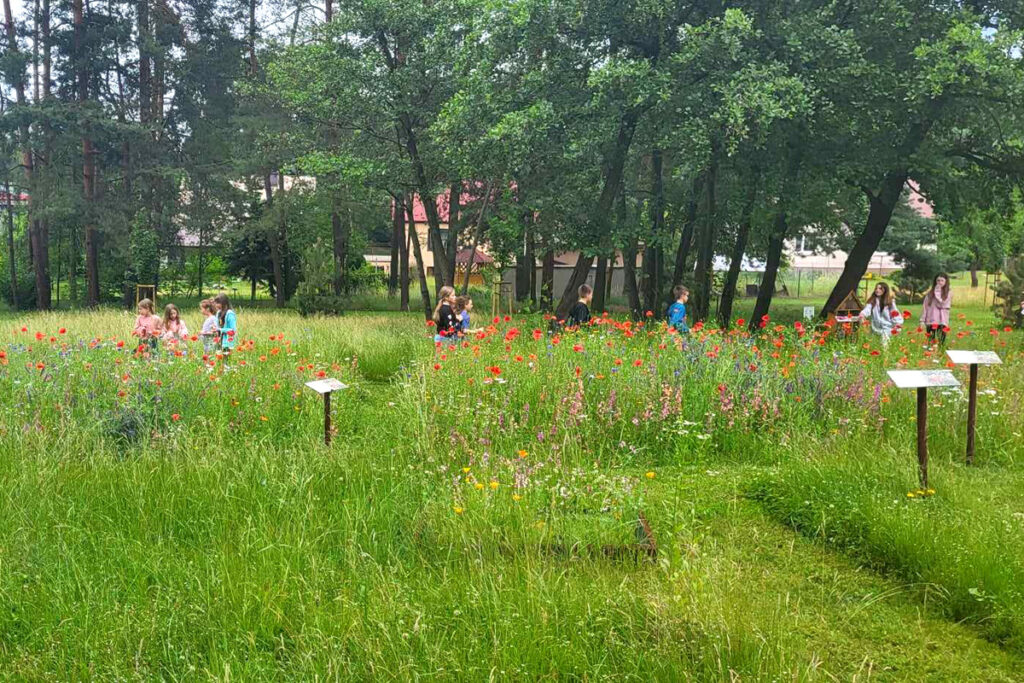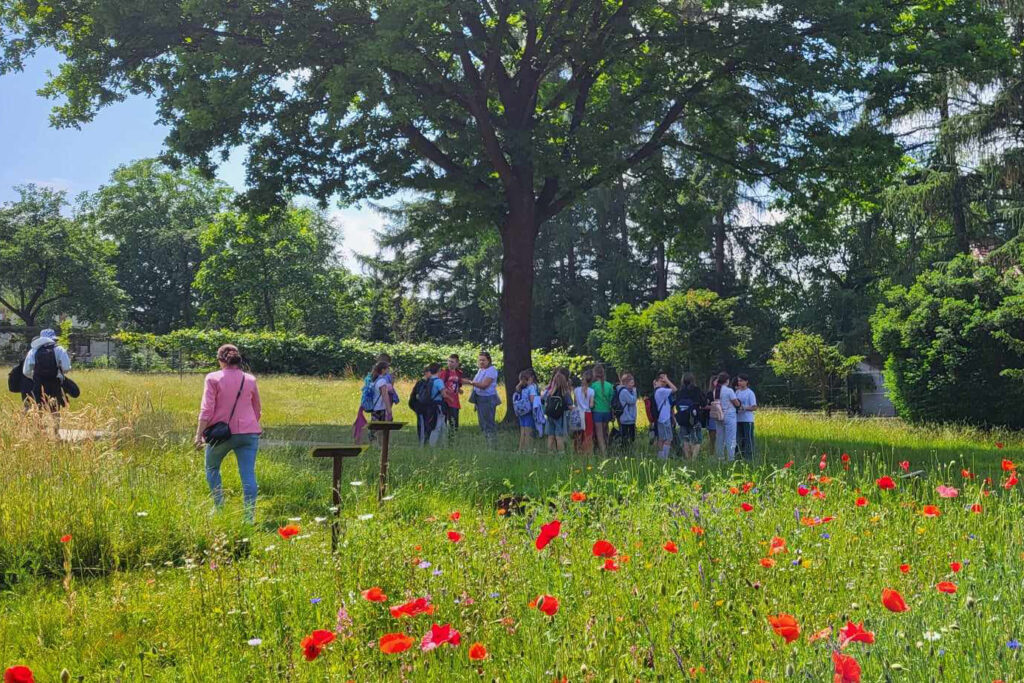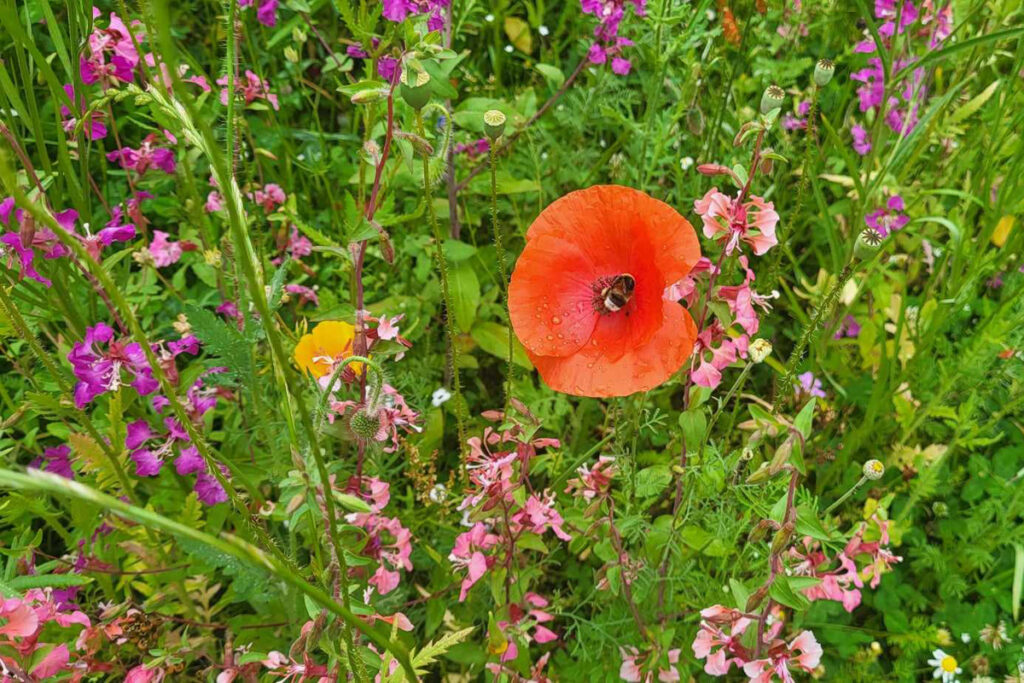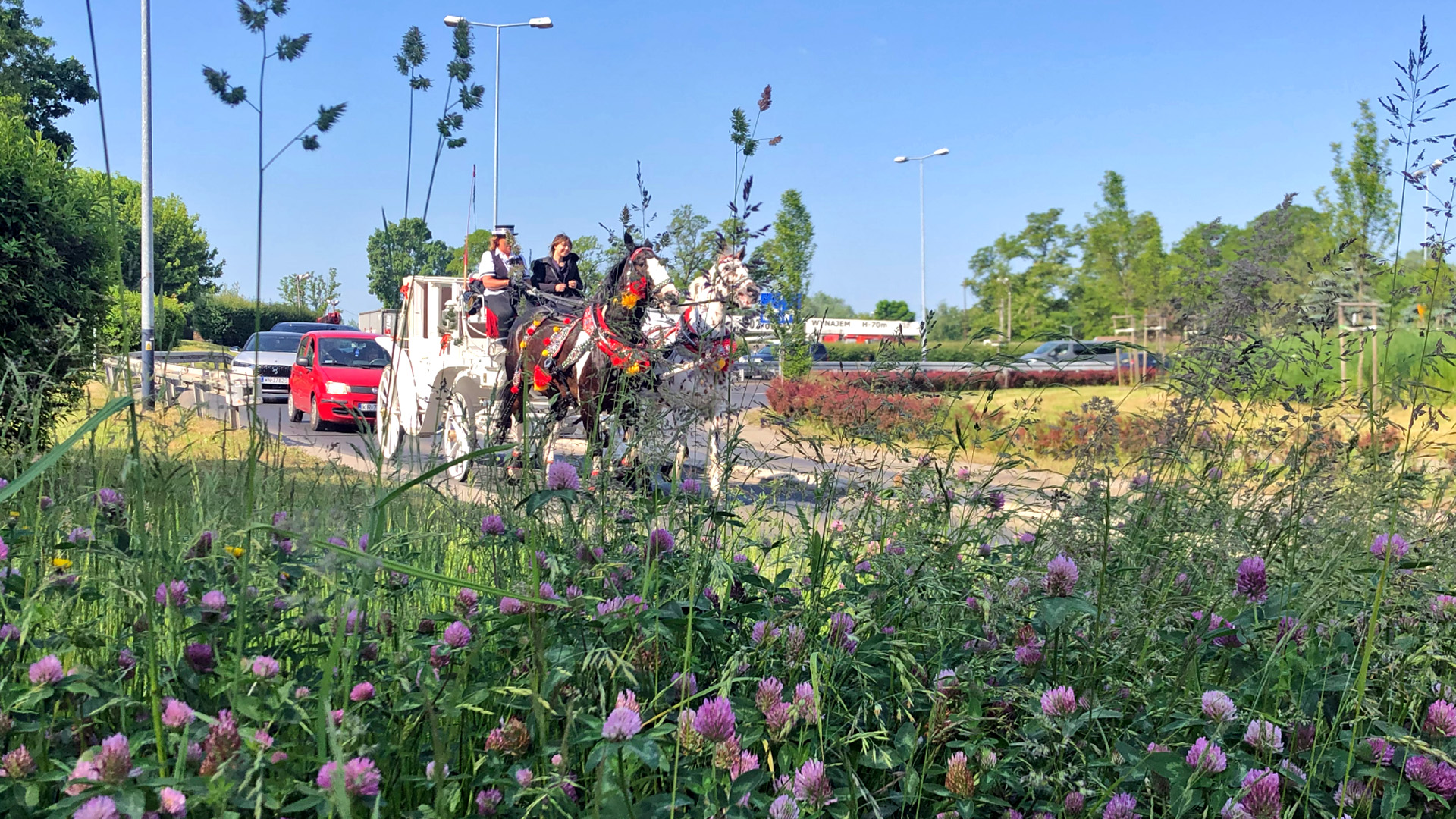For many people, mowing is simply taking care of a garden or public space. Meanwhile, from the plants’ point of view, it causes major stress. When we cut plants, they lose their leaves – the main surface for photosynthesis, and therefore energy production. Thus, regeneration of above-ground parts, rather than root development or flower production, becomes their priority. This weakens their condition, reduces the ability to take up water and nutrients, and decreases resistance to adverse conditions, such as drought.
It is also worth pointing out that frequent mowing prevents plants from flowering. Flower buds are cut off before they have time to develop, which means that many plant species don’t have a chance to produce seeds. Their life cycle is therefore interrupted and the diversity of plants on the lawn decreases. Species, such as ragged robin (Lychnis flos-cuculi), oxeye daisy (Leucanthemum vulgare), cuckoo flower (Cardamine pratensis), rough hawkbit (Leontodon hispidus), field pansy (Viola arvensis) or spreading bellflower (Campanula patula) are all sensitive to such treatment. All of them perform an important function in the ecosystem by providing food for pollinating insects such as bees and butterflies.
If there are no flowering plants on the lawn, insects lose their food source. Fewer insects mean less pollination, which influences not only the local vegetation but also the entire food chain, from small birds to larger mammals. While a lawn that is mowed too often may look neat, it becomes biologically poor and less environmentally friendly.
Frequency of mowing is of paramount importance. Only a few, hardly, mostly grass species, such as perennial ryegrass (Lolium perenne), kentucky bluegrass (Poa pratensis), and red fescue (Festuca rubra), among which there may be common dandelion (Taraxacum officinale), daisy (Bellis perennis), or white clover (Trifolium repens) favor lawns mowed on a weekly basis. In contrast, less frequent mowing – two or three times a season – lets more species bloom. As a result, biodiversity increases, and the lawns become much more friendly to insects, birds, and other organisms.
Moreover, taller vegetation is better at protecting the soil from drying out, it reduces water evaporation, and improves the microclimate. Lawns that are not mowed too often require less watering, fertilization, and labor. This is a win-win solution for both the environment and ourselves.
Instead of fighting nature, it’s worth getting along with it. How about leaving a section of your garden unkempt? Let the plants bloom and let nature work at its own pace. Even the smallest change can make a real difference for biodiversity, climate, and our closest surroundings.
Gallery:
